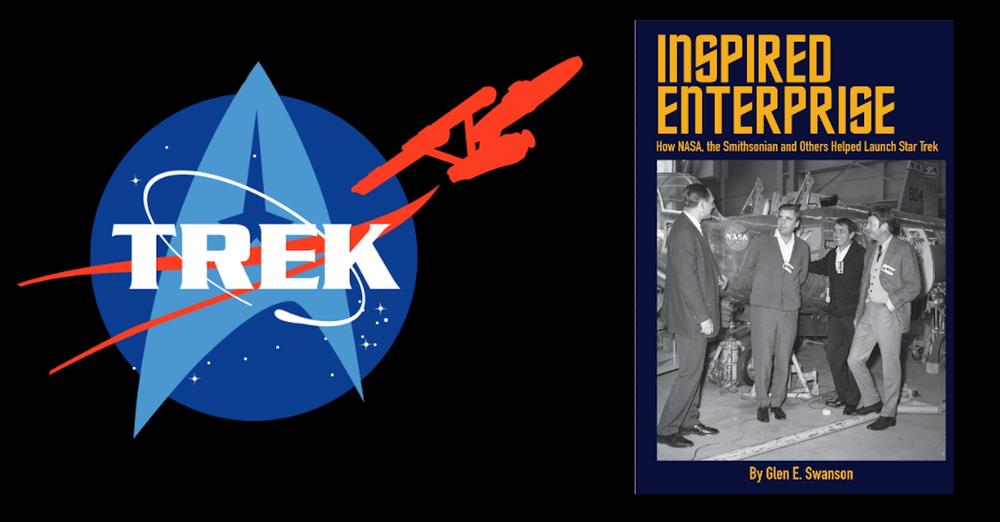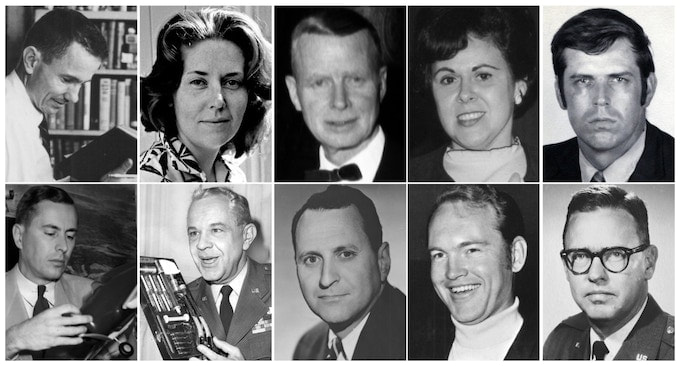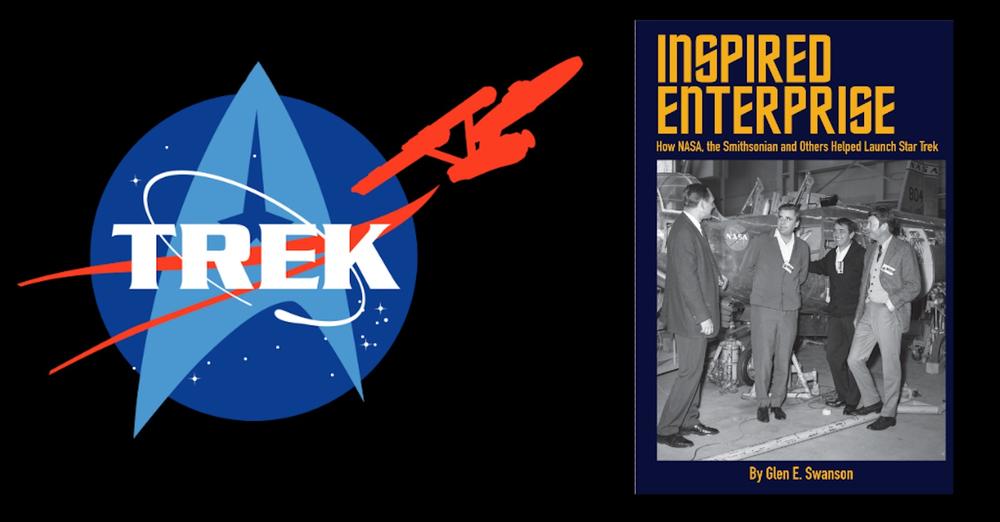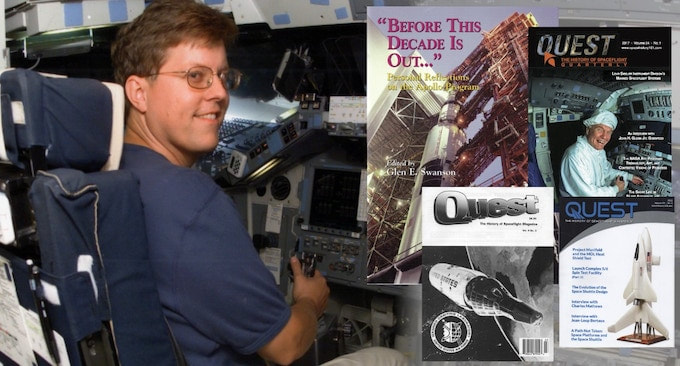Inspired Enterprise |
How NASA, the Smithsonian and Others
Helped Launch Star Trek |
I am currently at work on a forthcoming book, Inspired Enterprise, which explores how a small but highly influential group of people worked behind the scenes to convey a high level of credibility, respect, and authenticity that helped convince network executives to fund production of Star Trek for three full seasons. This was important because having three full seasons helped qualify the series for syndication. Once syndicated, Star Trek achieved immortality, creating legions of new fans who brought about its growth and popularity.
For updates, check out the project's Kickstarter page - it was successfully funded in June 2023.
For updates, check out the project's Kickstarter page - it was successfully funded in June 2023.
The book covers a ten-year period from Star Trek's first network airing in 1966 through the show's phenomenal rise in popularity in syndication which was highlighted by the rollout of the first space shuttle in 1976 after a popular letter writing campaign organized by fans to have NASA rename its first true spaceship "Enterprise" after the show's iconic starship. Through its focus on this significant decade, the book presents new information about such behind-the-scenes notables as Harvey Lynn, the RAND scientist who was hired as the show’s first technical consultant; Kellam de Forest, who did script clearance and fact-checking that ultimately helped give us the Gorn and Stardates; and Stephen Whitfield, the nom de plume for Stephen Poe, who helped broker the deal that lead to the production of the first AMT Star Trek model kits and the writing of his best-selling book The Making of Star Trek.
While working in the archives of the Johnson Space Center in Houston on the Apollo Program, I first discovered information that showed just how much NASA was involved in the production of the original television series. Since then, I've been able to expand my research to bring the full picture into focus, including how the military (specifically the Navy and Air Force) and even the Smithsonian helped bring Gene Roddenberry's vision for Star Trek to life. What I uncovered will surprise even the most knowledgeable fans of the franchise.
More than twenty years of research have gone into writing this book. I presented early findings in several articles, including one that appeared in the February/March 2021 issue of the Smithsonian's Air & Space Magazine and another as the cover story in the January/February issue of Michigan History Magazine, the publication of the Historical Society of Michigan. In addition, an article appeared online in The Space Review.
The overwhelmingly positive response I received from these initial published accounts encouraged me to delve even deeper into the subject, inspiring me to write a full-length book that would tell the complete story of how NASA, the Smithsonian, and other organizations and individuals played a vital role in the development of the original series.
In fall 2022, I secured a publisher and signed a contract. Since then, I have been busy writing and conducting interviews as well as gathering photos and securing permissions for their use. The manuscript is on schedule to be completed in early 2024 and my publisher has promised to deliver a completed book in 2025.
While working in the archives of the Johnson Space Center in Houston on the Apollo Program, I first discovered information that showed just how much NASA was involved in the production of the original television series. Since then, I've been able to expand my research to bring the full picture into focus, including how the military (specifically the Navy and Air Force) and even the Smithsonian helped bring Gene Roddenberry's vision for Star Trek to life. What I uncovered will surprise even the most knowledgeable fans of the franchise.
More than twenty years of research have gone into writing this book. I presented early findings in several articles, including one that appeared in the February/March 2021 issue of the Smithsonian's Air & Space Magazine and another as the cover story in the January/February issue of Michigan History Magazine, the publication of the Historical Society of Michigan. In addition, an article appeared online in The Space Review.
The overwhelmingly positive response I received from these initial published accounts encouraged me to delve even deeper into the subject, inspiring me to write a full-length book that would tell the complete story of how NASA, the Smithsonian, and other organizations and individuals played a vital role in the development of the original series.
In fall 2022, I secured a publisher and signed a contract. Since then, I have been busy writing and conducting interviews as well as gathering photos and securing permissions for their use. The manuscript is on schedule to be completed in early 2024 and my publisher has promised to deliver a completed book in 2025.
The money raised from this campaign was used for archival visits and licensing fees allowing me to include some rare and unique photographs in my book, many of which have never before been published. The successful Kickstarter also lets me promote the book upon its publication next year. Thanks to everyone who donated!



